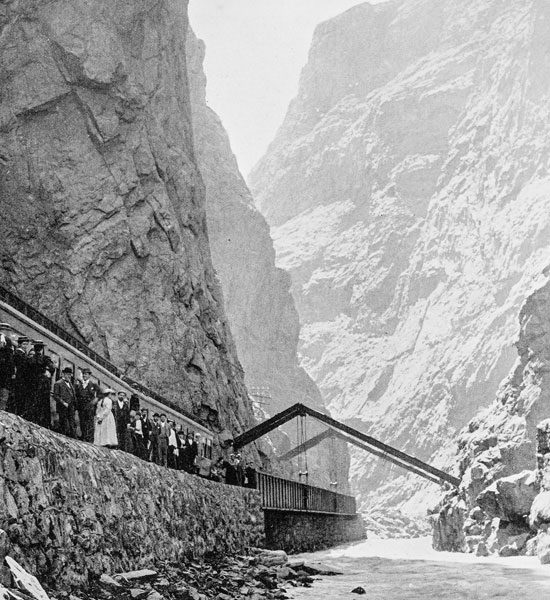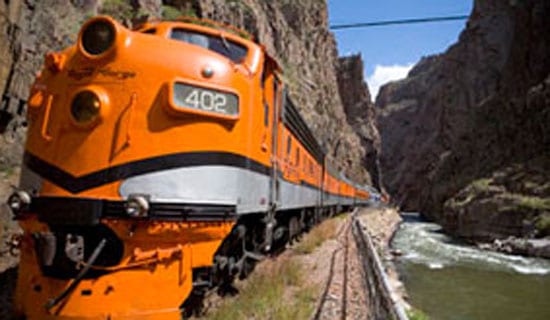The Royal Gorge was a tourist attraction well before the construction of the bridge in 1929. Travelers started visiting the area as early as the late 1800’s. Today, hundreds of thousands visit the park annually by kayak, raft, train, and bridge. There are lots of ways to experience the Royal Gorge, but let’s start with our favorite.
River Running
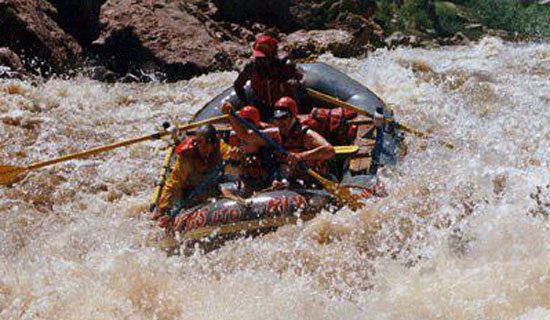
People started kayaking the Upper Arkansas River in the 1940’s, but commercial rafting did not catch on until the early 1970s. It took another decade for people to start rafting the Royal Gorge, because it was originally considered too dangerous. That mindset changed with the advancement of equipment and skills. More than 44,000 people commercially rafted the Royal Gorge in 2016 alone, according to the Arkansas Headwaters Recreation Area.
Book Online and Save
10% OFF Rafting Tours
Gear included – no rental fees
- Promo Code: ONLINE
- Pick any date May through Labor Day
How we got here: Geology
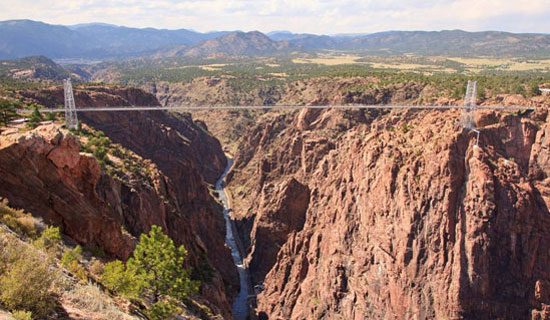
Colorado’s Royal Gorge divides the Wet Mountains to the south and the Front Range to the north. Its sheer walls are made of Precambrian gneiss and granite. The Arkansas River has cut into this hard rock for the past three million years, making it more steep and narrow than other canyons of the American West. The Royal Gorge is 1,250 feet wide, 1,050 feet deep, and 10 miles long.
Human History
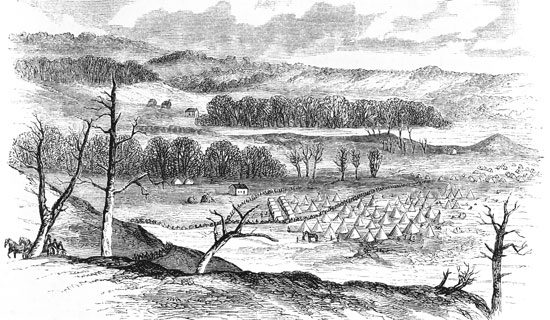
Native Americans from the Ute People spent winters in the Royal Gorge for its mild climate. The Comanche, Kiowa, Sioux, and Cheyenne also used parts of the canyon as a staging area for buffalo hunts in the South Park Basin. Zebulon Pike was the first recorded European to travel to the Royal Gorge, but early mountain men also used the route to access trapping and hunting grounds in the Upper Arkansas River Valley.
The Railroad
Leadville’s gold and silver boom of the late 1800’s led to the need for a railway through the Royal Gorge. Two companies had plans to build it, but only one track could fit through the narrow canyon. This started a Railroad War between the Atchison, Topeka and Santa Fe Railway, and the smaller Denver and Rio Grande company. The Atchison, Topeka and Santa Fe Railway notably hired Bat Masterson, Doc Holiday and a group of armed guards to protect against sabotage. No one was killed in this war, it was mostly battled in court. You can still see remnants of forts and gun stations along the Arkansas River when you kayak or raft the Royal Gorge.
The Fourth Judicial Court signed the Treaty of Boston on June 10th, 1879, which awarded the Denver and Rio Grande access to the route. The company continued freight service through the gorge until 1989 – eventually as the Union Pacific. The Royal Gorge Express purchased the line in 1997 and has operated tourist trains as the Royal Gorge Route Railroad since 1999.
The Pipeline
In the early 1900s, Canon City installed a dam and pipeline in the Royal Gorge for the town’s water supply. Prisoners from the Territorial Prison were used to help build the pipeline, which was mostly constructed of redwood. The system was abandoned in 1973, but much of it still exists today.
The Royal Gorge Bridge and Park
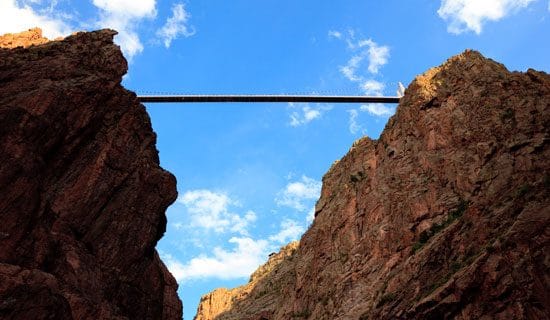
In 1906 Congress granted Canon City 5,000 acres surrounding the Royal Gorge. Theodore Roosevelt signed the grant. The first restaurant and viewing platform were built on the rim in 1925. Then Lon Piper had the vision and financial backing to build a bridge across the gorge.
Construction began in June of 1929. Workers lowered two half-inch cables from each side of the Gorge down to the bottom. Then they spliced the cables together and with the help of a steam powered winch pulled the cables back to the top. The foundation for the bridge was in place. Piper and his team completed the bridge in only 7 months at a cost of $350,000. On December 8th, 1929 over 3,000 people attended the grand opening of the bridge. The Royal Gorge Bridge would be the highest suspension bridge in the world for the next 70 years.
Piper and his team built the incline railway from the bridge into the Gorge in 1931. The incline railway is still in place and can be seen from the river. It was damaged by the wildfire of 2013 and is out of service indefinitely.
The Royal Gorge Fire
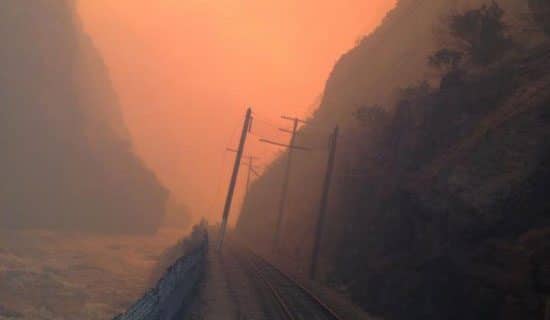
A wildfire began on the south rim of the Royal Gorge in June of 2013. The fire jumped over the canyon and ravaged the park. While the bridge itself had only minor damage, a majority of the structures including the tram and visitors center burned to the ground. The Royal Gorge Bridge and Park officially re-opened in May of 2015.

